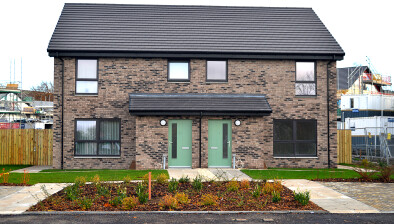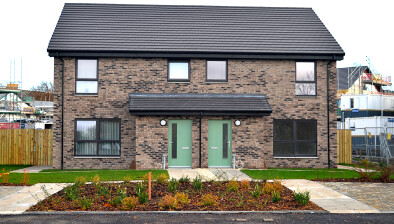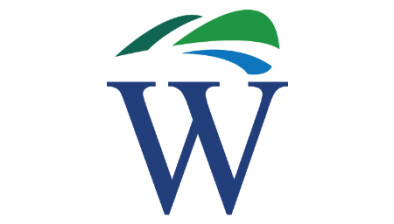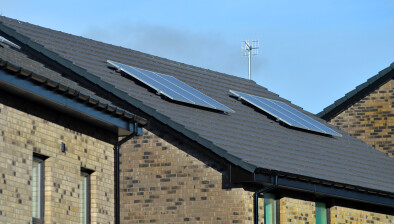Council to remove external window panels in Clydebank after review of high-rise flats
 West Dunbartonshire Council is set to remove external window panels on 11 high-rise blocks in Clydebank as the post-Grenfell review of Scotland’s buildings continues to raise questions over the use of cladding in use across the country.
West Dunbartonshire Council is set to remove external window panels on 11 high-rise blocks in Clydebank as the post-Grenfell review of Scotland’s buildings continues to raise questions over the use of cladding in use across the country.
The council commissioned an external expert to conduct comprehensive fire safety assessments of its 22 multi-storey properties in the wake of the Grenfell Tower fire in June this year.
The consultant has recommended that the panels below each window in 11 of the blocks should be replaced.
The checks raised questions over the composition of the material used within the panels and, although the panels meet current building safety regulations, to remove any uncertainty, the council is removing the panels from five blocks in Dalmuir, five blocks in North Drumry and one block at Kilbowie.
Work is underway to identify alternative panels and the removal and replacement programme will begin as soon as possible.
The independent assessor has stressed that the window panels “are not in any way similar to those installed in Grenfell” and has recommended the material is removed to ensure the buildings meet enhanced fire safety standards.
Following the tragedy in London, the focus has been on the cladding applied to tower blocks, and the council confirmed in June that none of the high-rise properties in West Dunbartonshire were clad with the external material used at Grenfell.
The enhanced checks, which go beyond what is expected of landlords in Scotland, were commissioned by the council to scrutinise all aspects of fire safety within the buildings and offer further reassurance to residents.
Housing officers have today hand delivered letters to residents of all 11 affected blocks. In addition, council officers are in regular communications with the Scottish Fire and Rescue Service (SFRS), focused on all aspects of safety within high rise blocks, and this will continue throughout these works. SFRS are also putting measures in place to further reassure tenants and will visit any tenants at their homes and carry out free home safety visits.
The reports’ findings have also been shared with the Scottish Government and West Dunbartonshire Council is recommending that all councils and housing associations with similar properties across Scotland consider independent assessment of the properties.
Peter Barry, West Dunbartonshire Council’s strategic lead for housing & employability, said: “Our priority is the safety of our tenants and that is why we took the additional step of commissioning enhanced fire safety assessments. By carrying out these checks that are above and beyond what is expected, we have been able to identify an area for improvement in the form of the window panels. I want to be clear that the expert is explicit in saying these panels are not the same as the external wall coverings that were fitted at Grenfell. However, we will replace them as quickly as possible to fully reassure the people living in these homes.”
West Dunbartonshire Council leader Jonathan McColl said: “In the wake of Grenfell, everyone ─ the media, politicians, the public ─ has been focused on cladding and we remain assured that our cladding is not the same as Grenfell. While I am reassured that we have no concerns about our cladding, we want to provide the best possible reassurance to our tenants. Having instructed an expert to carry out extended inspections on these buildings, we are taking further action based on their findings.
“Council, Fire Service and external experts have been working on this from day one following the tragedy and deserve our thanks for their amazing efforts. Local tenant and resident groups have gone to great lengths to work in partnership with us for everyone’s benefit and this community effort is keeping people safe.”
West Dunbartonshire Council is the latest body to take action on its properties following a review of cladding across the country.
Last month it was announced the “combustible cladding” was found at 57 high-rise properties in Glasgow, though the city council said there was “no suggestion that these buildings are a particular fire risk”.
ACM was also found at hospitals in Glasgow and Edinburgh; however, officials from the Scottish Fire and Rescue Service say the buildings are safe.
Last week it was revealed that two housing blocks in Glasgow which were identified as containing ACM (Aluminium Composite Material) cladding similar to that used on Grenfell Tower are being subject to round-the-clock site patrols as part of a range of interim fire safety measures.
And just on Monday, The Herald reported that 38 sites owned by Scottish Enterprise, including the Glasgow Science Centre, are to undergo a series of inspections amid fears they were constructed with “flammable” materials, including its insulation.
Lomond Shores in Balloch is among those to be examined, along with Conference House in Edinburgh, Fife Energy Park, and the Alba Innovation Centre in Livingston.
A handful of buildings in East Kilbride, including the James Young Building, also feature along with sites in Stirling, Livingston, Larbert and Gourock.









